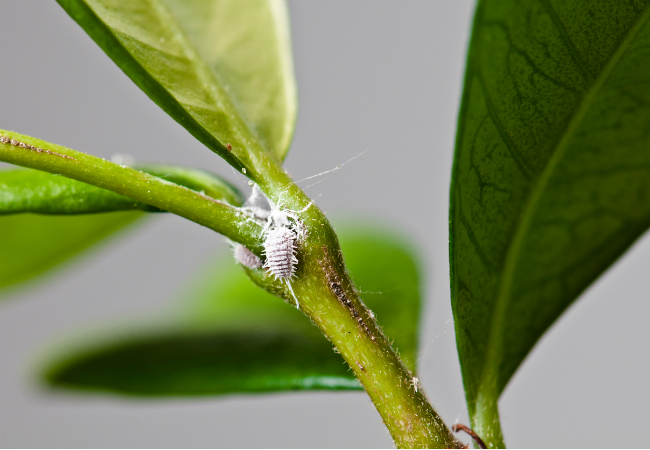

We may earn revenue from the products available on this page and participate in affiliate programs. Learn More ›
Your beautiful garden and indoor potted greenery are equally vulnerable to mealybugs, tiny yet destructive pests that sap the life out of plants. Mealybugs can stunt growth, wilt and yellow foliage, and mar the appearance of stems, nodes, and leaves with waxy white residue. What’s more, the sticky stuff they excrete—called mealybug honeydew—attracts other insects that feed on it.
The trickiest thing about these invaders is that they can be hard to recognize until you see evidence of their destructive ways. “They’re annoying and challenging,” says Daphne Richards, an agent with the Texas A&M AgriLife Extension Service. “You have to stay on top of them.”
What are mealybugs?
Members of the Pseudococcidae family, with some 275 species in the United States, mealybugs wreak havoc by piercing plant stems and leaves and sucking out the sap. They are drawn to all kinds of vegetation, particularly in warmer climates, targeting fruit trees, crops, and ornamental plants such as orchids, gardenia, English ivy, fuchsia, and coleus. They can attack outdoor and indoor plants, and can be especially invasive in greenhouses.
What do mealybugs look like?
Many mealybug species have numerous projections along the sides that look like legs. Female and male mealybugs don’t look anything alike.
Female mealybugs are:
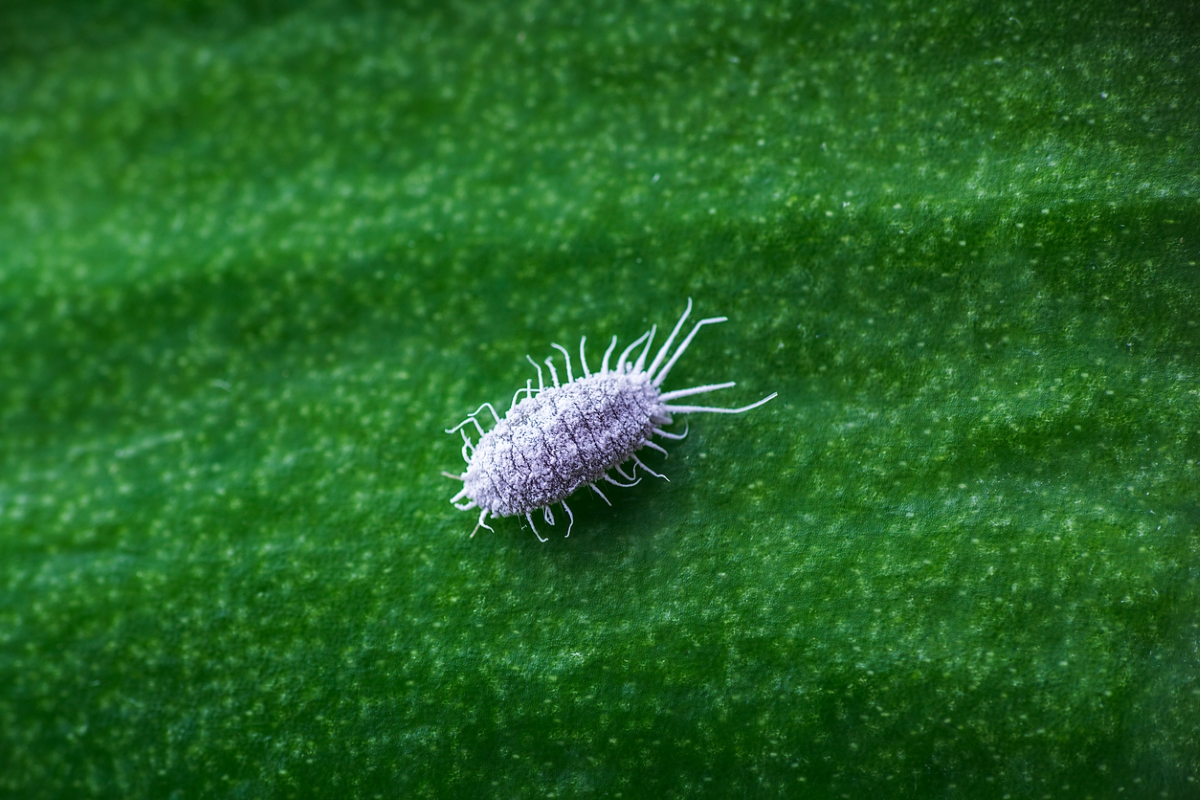
- White
- Covered in fluffy wax
- Oval shape
- 1/10- to to ¼-inch long
- Wingless
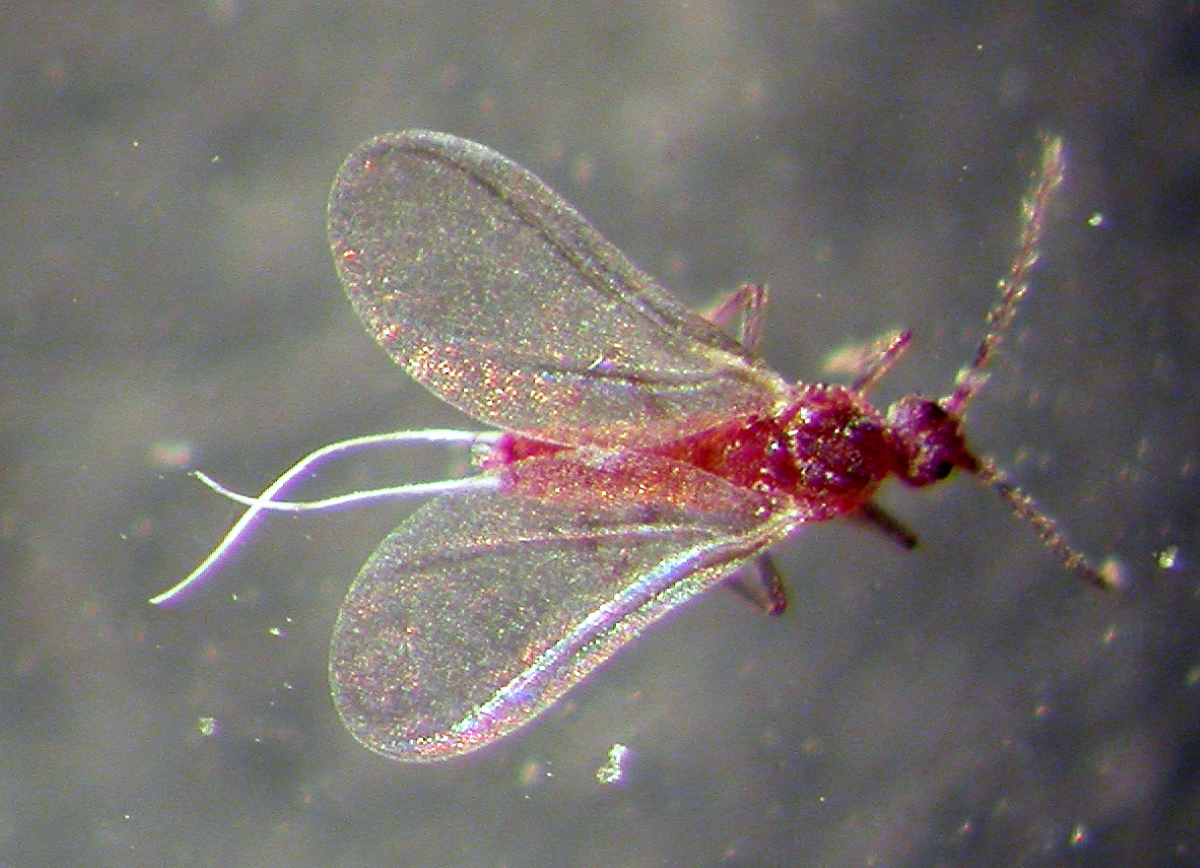
Male mealybugs are:
- Smaller than females
- A pale, peachy-pink color
- Winged
- Four-eyed
Once mealybugs find a feeding spot on a plant, they might gather together in an immobile cluster, so that’s something to watch for. Also be on the lookout for the bugs’ sticky excretions, which often are accompanied by black, sooty mold.
What is the life cycle of a mealybug?

The life cycle of a mealybug varies depending on species, but generally:
- A mature female mealybug emits a sex pheromone to attract males; they mate.
- The male dies.
- Within about 5 days, the female lays up to 600 eggs in a cotton-like pouch.
- After laying her eggs, the female dies.
- Nymphs, called “crawlers,” emerge in 1 to 2 weeks. These crawlers creep slowly to one spot where they feed until maturity.
- These nymphs go through several stages as they mature, and are fully mature after 6 to 10 weeks.
How did I get mealybugs on my plants?
A mealybug problem often surprises gardeners because it seems to occur mysteriously. The pests often come into a garden via plants from a nursery. After sneaking in on the undersides of leaves, petals, and protected areas at the base of plants, they can multiply unnoticed for some time. Be aware that mealybugs are attracted to warmth and moisture, so they might gravitate toward overwatered plants. In small numbers, mealybugs can’t do too much damage, but it’s nevertheless best to keep an eye out for signs of these critters and battle them right away.
How to Get Rid of Mealybugs: 5 Steps to Take Now
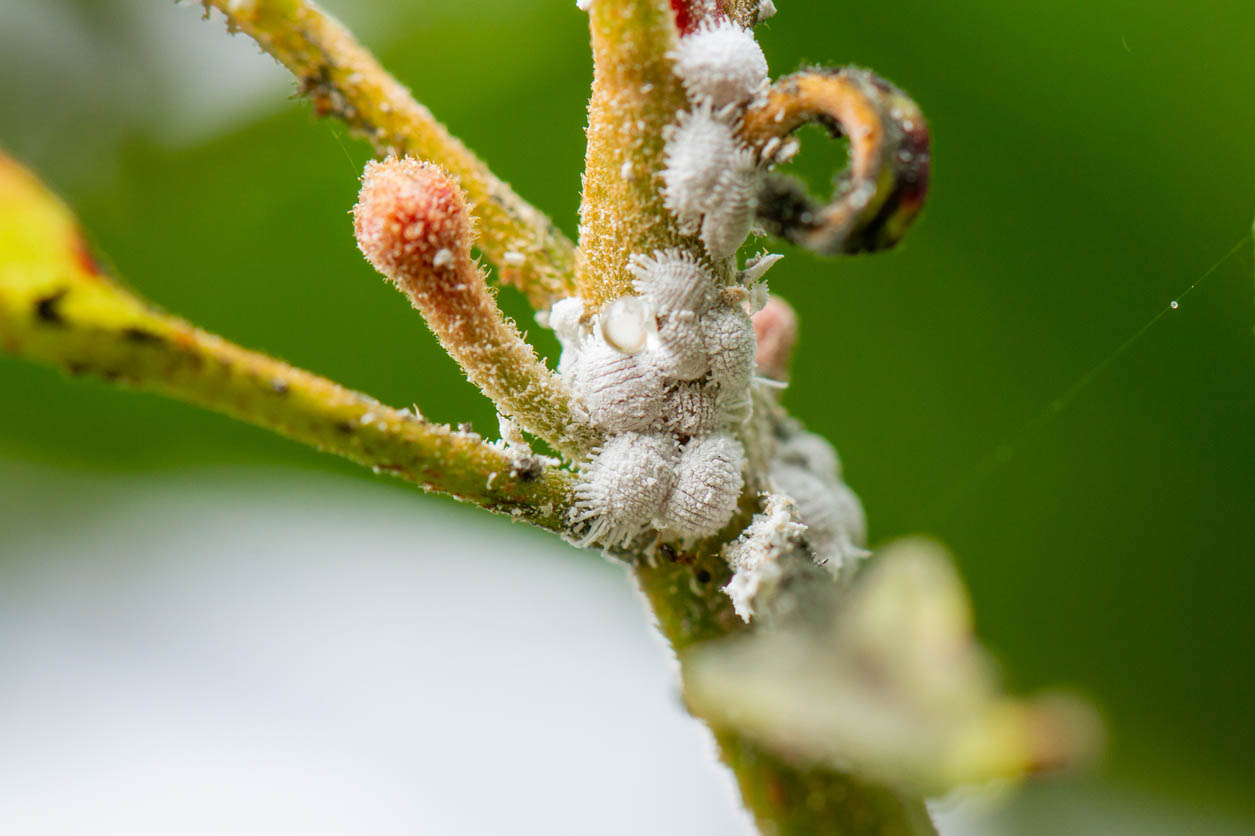
You need to take swift action as soon as you discover that your plants are hosting these pests. Try the following methods to make short work of banishing mealybugs. “They take vigilance,” says Richards. She adds that gardeners might think they’ve gotten rid of all the bugs, when in fact some remain.
While you can certainly do your best to get rid of an outdoor infestation, says Richards, you might find that “you almost have to completely remove an outdoor plant because it’s very difficult to get rid of an entire population” of mealybugs.
1. Remove mealybugs manually.
Start the eradication process by removing mealybugs manually.
- If you have just a few of the bugs on your plants, pick them off with your fingers—they don’t bite or carry diseases.
- For mealybugs on potted plants, a drop of isopropyl alcohol on a cotton swab will help penetrate the wax on the bugs’ bodies to remove them more easily. (Spot-test on a small part of the plant ahead of time to make sure it won’t cause leaf burn.)
- Spray sturdy garden plants and fruit trees with a garden hose to knock off large numbers of mealybugs. “Wash them off with a strong jet of water,” says Richards. “You can hold your hand on the backs of the leaves” to prevent damage, she says.
2. Introduce natural enemies.

Some predatory insects can help keep mealybug populations under control, including:
- Parasitic wasps
- Lacewings
- Predaceous midges
- Spiders
Black ladybugs (Cryptolaemus montrouzieri), shown above, are particularly effective at controlling mealybugs. Commonly known as the mealybug destroyer, the species is available for purchase at garden centers and online.
RELATED: Don’t Kill These 17 Beneficial Insects in Your Garden
3. Control the ant population.
While black ladybugs are the mealybugs’ enemies, ants are their chief allies. Protecting mealybugs from predators ensures that the ants can continue dining on syrupy honeydew that the mealybugs excrete. Combat ants naturally by making your garden hospitable to their predators, including:
- Ladybugs
- Hoverfly larvae
- Lacewing larvae
- Entomopathogenic fungi (which proliferate on the corpses of insects)
Also, employ ant control techniques if you spot unusual numbers of ants on plants. If you don’t get rid of the ants first, it will be more challenging to defeat the mealybugs.
4. Clean or remove the infested plant.
Depending on the species, it might be possible to salvage a plant that’s heavily infested with mealybugs by carefully uprooting and cleaning it. Succulents, for instance, can be lifted from their soil and washed thoroughly under running water, and then allowed to dry thoroughly before replanting.
Sometimes, the best course of action is to sacrifice the source plant to minimize further spread. Once you’ve removed it, inspect pots, tools, and other materials that may have come into contact with the plant for mealybugs and their egg sacs. Clean or discard any that show signs of infestation.
5. Apply insecticides.
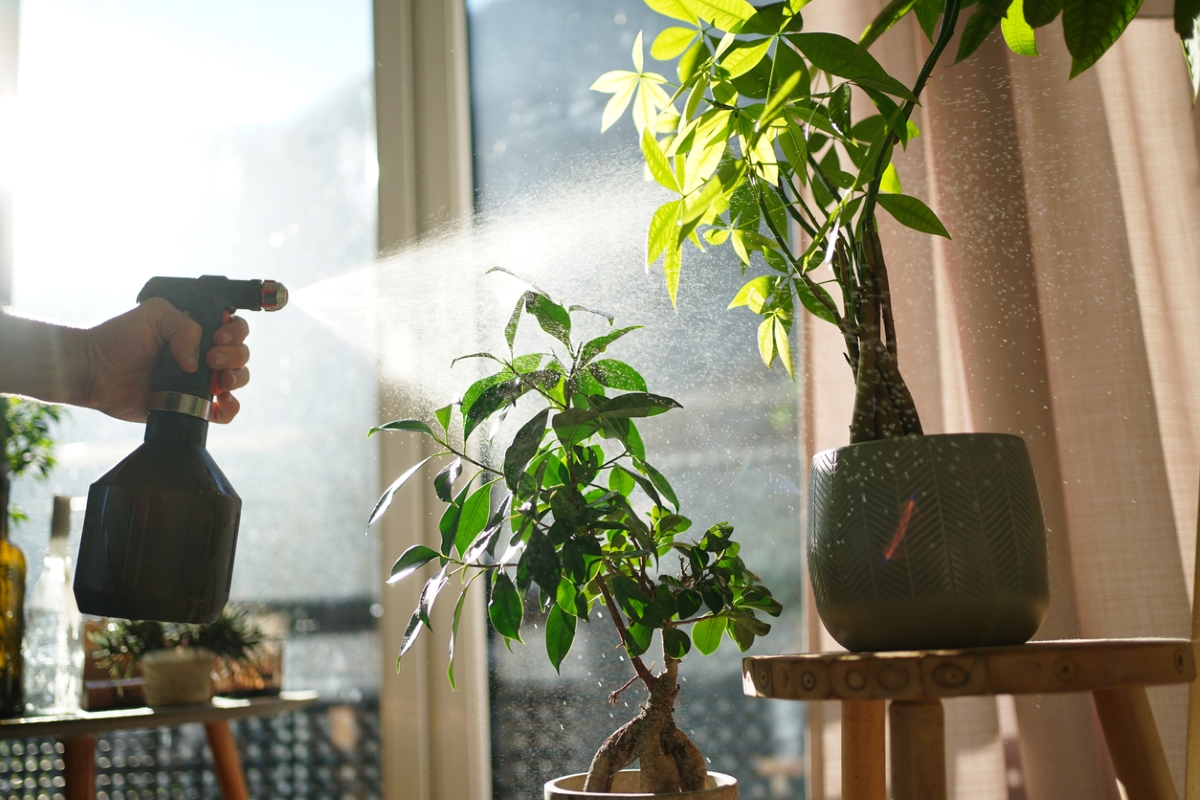
Before resorting to insecticides to treat your mealybug infestation, try these more sustainable solutions first:
- Insecticidal soap
- Horticultural oil
- Neem oil
Adult mealybugs’ waxy coating is like armor that is difficult to penetrate, but there are a couple of systemic chemical insecticides that can be effective against mealybugs: Dinotefuran for landscape plants, and imidacloprid for houseplants. These have to be applied to the soil and taken up by the plant. Bear in mind that these chemicals may also be harmful to beneficial insects, which is why using them should be a last resort.
Whichever mealybug treatment you use, you’ll get best results after multiple applications Multiple applications will likely be needed for best results. Rather than rely on one product, rotate insecticides to delay resistance. Make sure to apply thoroughly to the undersides of the plant where mealybugs often hide.
RELATED: Help! What Are These Tiny White Bugs in My House?
How to Prevent Mealybug Infestations
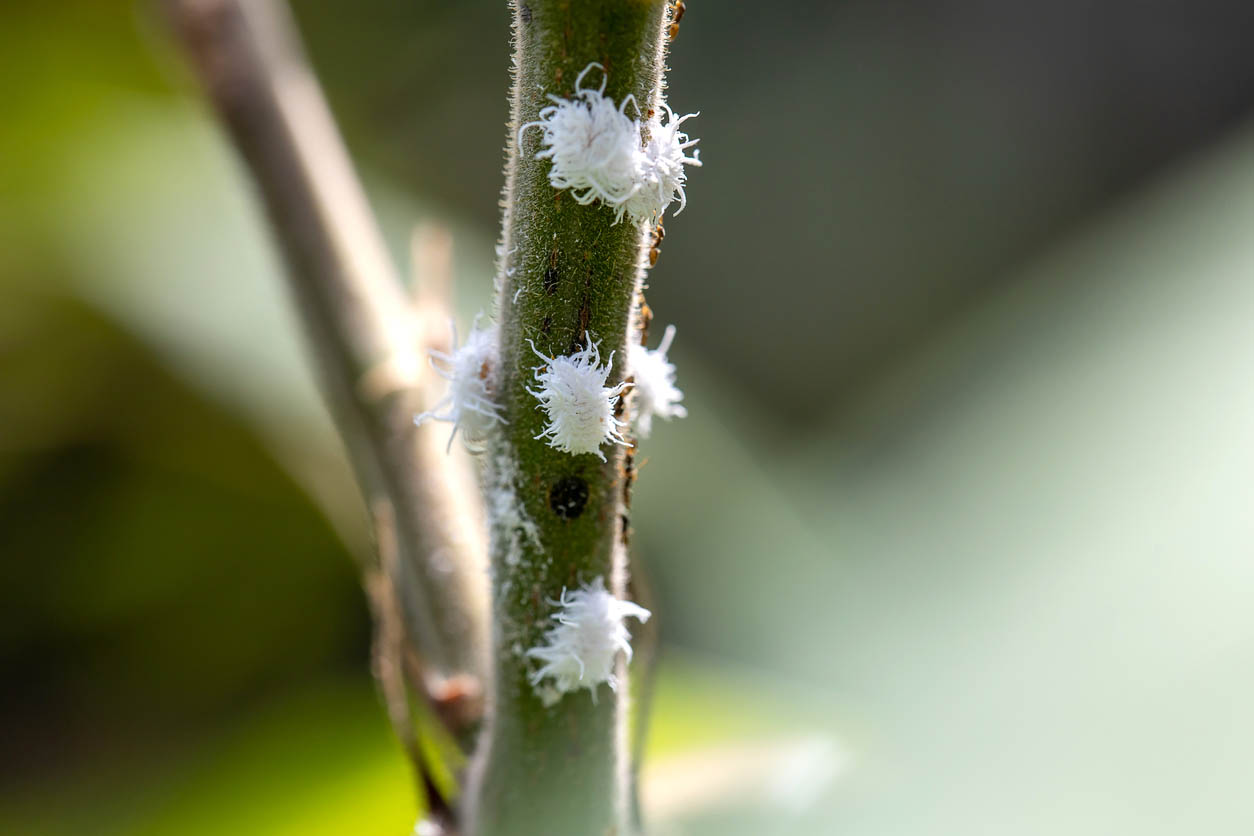
Once you’ve conquered the insects, vigilance will help ensure that mealybugs never get into your garden or houseplants again.
- Always inspect new plant purchases for sticky honeydew and black mold on leaves before bringing them home.
- Isolate newly purchased plants before introducing them to your home or garden.
- If you got an infected plant from a nursery, avoid purchasing plants from that particular nursery in future.
- Keep ants at bay and invite the natural enemies of ants and mealybugs to your landscape.
- Reconsider plants that are particularly susceptible to mealybugs, such as:
- Coleus
- Rosemary
- Sage
- Fuchsia
- Cactus
- Dracaena
- Fern
- Philodendron
- Add plants that repel ants:
- Catnip
- Peppermint
- Pennyroyal
“You just have to stay on top of” a mealybug problem, says Richards. “Watch carefully to be sure the population doesn’t reemerge.”
FAQs
Dish soap can indeed be an effective weapon against mealybugs when used on certain plants, particularly tomato plants. Mix 2 teaspoons of dish detergent in 2 cups of filtered water in a spray bottle and test it on a few leaves to ensure it won’t damage the plant. If all seems clear, spray both sides of the leaves until the entire plant is wet with the solution, which will stick to mealybugs and ultimately suffocate them. Hose off gently after about 4 hours to remove bugs.
Root mealybugs live in soil and feed on plant roots. Soil soaks containing neem oil may be effective against root mealybugs and other underground pests without harming beneficial earthworms.
